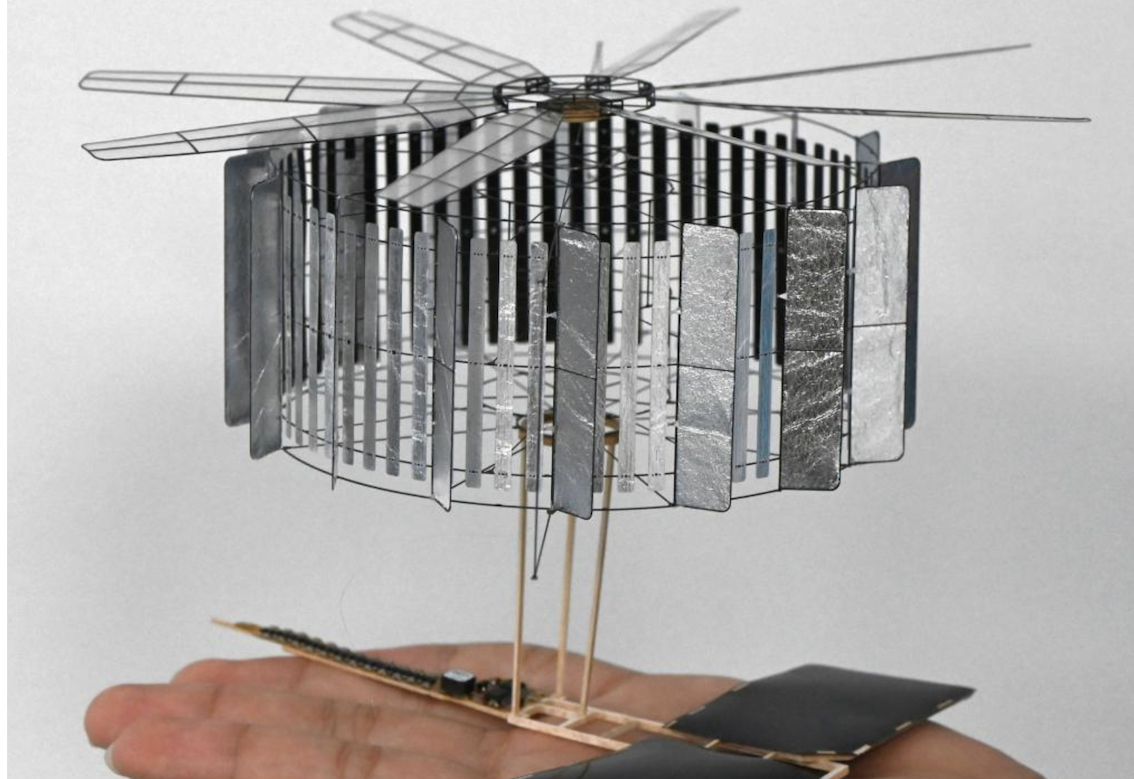
“Forever-flying” Micro Drone
Researchers have developed a revolutionary micro-aircraft (drone) that weighs just 4 grams and can theoretically stay aloft indefinitely thanks to highly efficient solar panels. This technology could offer ground-breaking innovations in aviation by being shrunk down to insect-size.
Although traditional drones are used in various fields such as communication, search and rescue, and aerial imaging, their limited battery life is a major drawback. Solar-powered versions struggle to generate enough power.
The team led by Dr. Mingjing Qi from Beihang University in China seems to have overcome these problems by shrinking drones, along with their solar panels, reducing the energy need and thus eliminating the efficiency of traditional electric motors due to heat loss.
To solve this problem, the team designed an innovative and simple circuit that increases the voltage generated by solar panels to a range of 6,000 to 9,000 volts by using an electrostatic propulsion system instead of electromagnetic motors.
This motor works by using electrical charges to attract and repel components arranged in rings, which generate torque and rotate the rotor blade like a helicopter propeller. The lightweight components are made of sheets of carbon fiber coated with extremely thin aluminum foil. The high voltage requirements are an advantage because the current is reduced, which reduces heat losses to very low levels. The ultra-lightweight components made from carbon fiber and aluminum foil turn the high voltage requirement into an advantage, running at a low current. This means the engine generates almost no heat and provides long-lasting flight with a very small solar panel.
Dr. Qi states that the prototype, called “CoulombFly”, is the first micro-aircraft to be powered by natural sunlight so far. Weighing only 4.21 grams, the device was able to fly for one hour before it stalled due to a mechanical failure.
The researchers hope that by addressing the weaknesses with design improvements, they will be able to develop truly infinite-range drones by harvesting energy from solar panels during the day and from environmental signals such as 4G and Wi-Fi at night.
The CoulombFly, which can currently carry a payload of 1.59 grams, could be equipped with small sensors, computers, or cameras in the future. The research team aims to increase the payload capacity up to 4 grams in future versions and to carry up to 30 grams with fixed-wing versions. Work is also underway on even more miniature CoulombFly models with propellers smaller than 1 cm.
This innovative technology could lead to revolutionary developments in aviation, paving the way for environmentally friendly, long-range drones that provide continuous surveillance, data collection, and communication.[/vc_column_text][/vc_column][/vc_row]
REFERENCES
- 1. https://www.nature.com/articles/s41586-024-07609-4.epdf?sharing_token=zrhXIagS1CzN5cnBJ8uVs9RgN0jAjWel9jnR3ZoTv0N2aOeFrNF_yO_jlpOjASo8_rmWtles42f7LxAF7oh0bRYBKofjDEAUhzuYCf8K2kU7vXa3M-ProINtXwOMglvQzDLZ8TMqx_PHdRWHGaooqrt-8B8ogUZJe_HqFw6N-8W6nB3-vUGRgOIq4mzA8OCDmp1IArVebf1OxhHron00Uuv3Wkh80iPlaAo17SnHh2c%3D&tracking_referrer=www.newscientist.com
- 2. https://interestingengineering.com/innovation/4-gram-solar-drone-can-fly-forever
